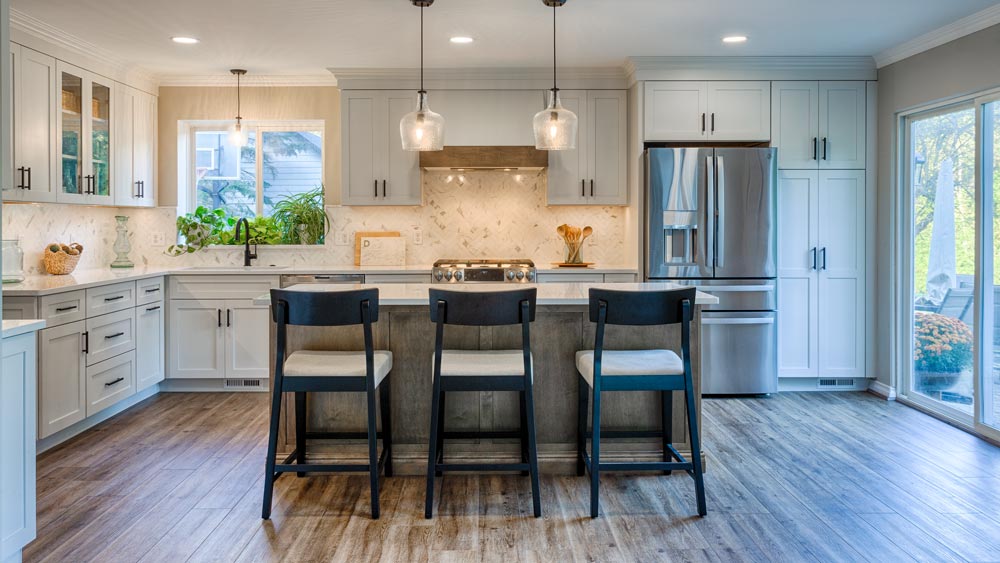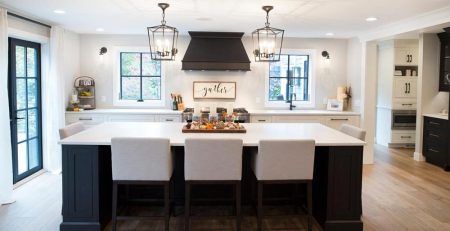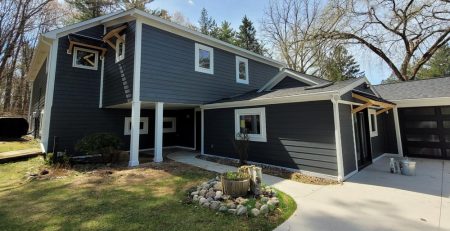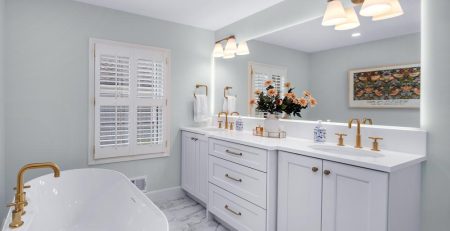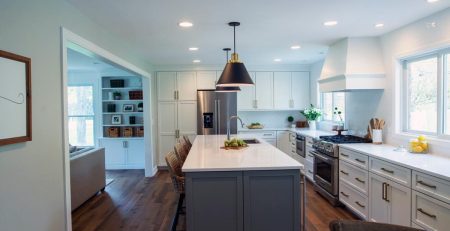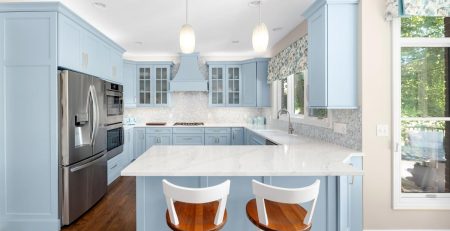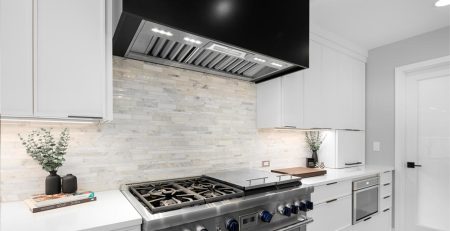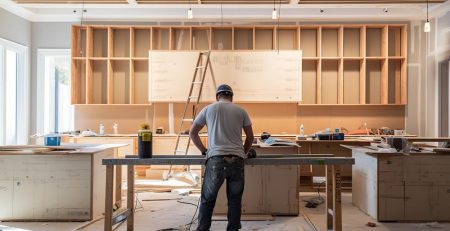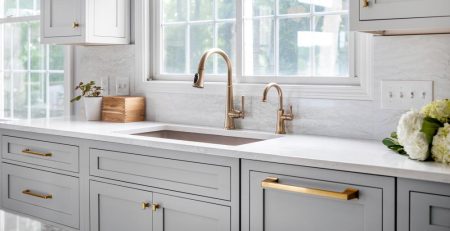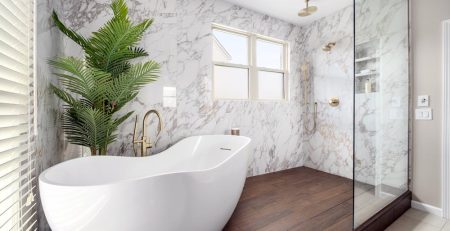Mixing Materials in Kitchen Design
By combining different materials, textures, and finishes, designers can add depth, interest, and personality to the kitchen while still maintaining a cohesive overall look. In this article, we will explore the art of mixing materials in kitchen design, discussing the pros and cons of various combinations and offering tips for achieving harmony in your own kitchen.
Why Mix Materials?
Before diving into the specifics of mixing materials, it’s important to understand why this approach is so popular in kitchen design. Mixing materials allows for greater creativity and personalization, as it opens up a world of possibilities beyond traditional monochromatic schemes. By incorporating a variety of materials, textures, and finishes, designers can create visual interest and contrast, making the kitchen a more dynamic and inviting space.
Additionally, mixing materials allows for greater flexibility in terms of functionality, as different materials may be better suited to specific tasks or areas within the kitchen. Overall, mixing materials offers endless opportunities for creativity and customization, allowing homeowners to express their unique style and personality.
Combining Different Materials
When it comes to mixing materials in kitchen design, the possibilities are virtually endless. From natural stone and wood to metal and glass, there are countless options to choose from. Here are some popular combinations and their pros and cons.

Wood and Stone
Pros
- Creates a warm and inviting atmosphere.
- Offers a natural and organic look.
- Provides a variety of textures and finishes to choose from.
- Durable and long-lasting.
Cons
- Requires regular maintenance to prevent damage and wear.
- Can be susceptible to moisture and heat damage if not properly sealed.
- May be more expensive.

Metal & Glass
Pros
- Adds a sleek and modern touch to the kitchen.
- Reflects light, making the space feel brighter and more spacious.
- Easy to clean and maintain.
- Resistant to moisture and heat damage.
Cons
- Can feel cold and sterile if not balanced with warmer materials.
- May show fingerprints and smudges more easily.
- Limited options in terms of texture and finish.
“While mixing materials can add depth and interest to a kitchen, it’s important to approach the process thoughtfully to ensure a cohesive and balanced result.”

Tile and Brick
Pros
- Adds texture and visual interest to the kitchen.
- Available in a wide range of colors, patterns, and sizes.
- Durable and easy to clean.
- Provides a rustic and charming look.
Cons
- Grout lines may require regular cleaning and maintenance.
- Limited options for finishes compared to other materials.
- Can feel heavy and overwhelming if used excessively.

Laminate Countertops
Pros
- Affordable and budget-friendly option.
- Available in a wide range of colors and patterns.
- Easy to clean and maintain.
Cons
- Even though more cost efficient it is not as elegant as hard surfaces.
- Limited options for texture and finish.
- May show wear and tear over time.
Tips for Achieving Harmony
While mixing materials can add depth and interest to a kitchen, it’s important to approach the process thoughtfully to ensure a cohesive and balanced result. Here are some tips for achieving harmony in your mixed-material kitchen design:
- Choose a Dominant Material: Start by selecting one primary material to serve as the foundation of your design. This could be a countertop material, backsplash tile, or flooring option. Once you have a dominant material in place, you can then layer in complementary materials to add contrast and visual interest.
- Consider the Overall Style: Think about the overall style and aesthetic you want to achieve in your kitchen. Whether it’s modern and sleek or rustic and cozy, choose materials that align with your vision and complement the existing elements in the space.
- Mind the Scale: Pay attention to the scale and proportion of the materials you choose. Mixing too many different materials in a small space can feel overwhelming, so opt for a few key materials and use them strategically throughout the kitchen.
- Create Balance: Balance is key when mixing materials in kitchen design. If you have a bold or busy patterned material, balance it out with simpler, more understated materials in other areas of the kitchen. Similarly, consider the balance of light and dark tones, textures, and finishes to create a harmonious overall look.
- Experiment with Texture: Don’t be afraid to mix different textures within your kitchen design. Combining smooth surfaces with rough textures can add depth and dimension to the space, creating a dynamic and visually appealing environment.
- Pay Attention to Transitions: Pay attention to how different materials transition from one area to another. Seamless transitions between materials can help create a cohesive flow throughout the kitchen, while abrupt changes can feel disjointed and jarring.
- Seek Inspiration: Finally, don’t hesitate to seek inspiration from magazines, blogs. Look for examples of mixed-material kitchens that resonate with your style and taste and use them as a guide for your own design project.
Oakland County Kitchen Designers
Mixing materials in kitchen design offers endless opportunities for creativity and personalization. By combining different materials, textures, and finishes, homeowners can create unique and visually stunning spaces that reflect their individual style and personality.
Whether you prefer the warmth of wood and stone or the sleekness of metal and glass, there are countless options to choose from when it comes to mixing materials in the kitchen. With careful planning and attention to detail, you can achieve a harmonious and cohesive design that will enhance the beauty and functionality of your kitchen for years to come.
Connect with our team of design+build experts at (248) 260-7639 or contact us here to get your project started.


